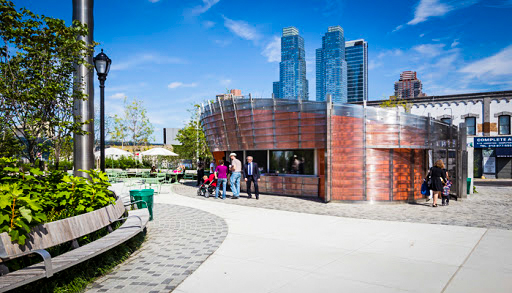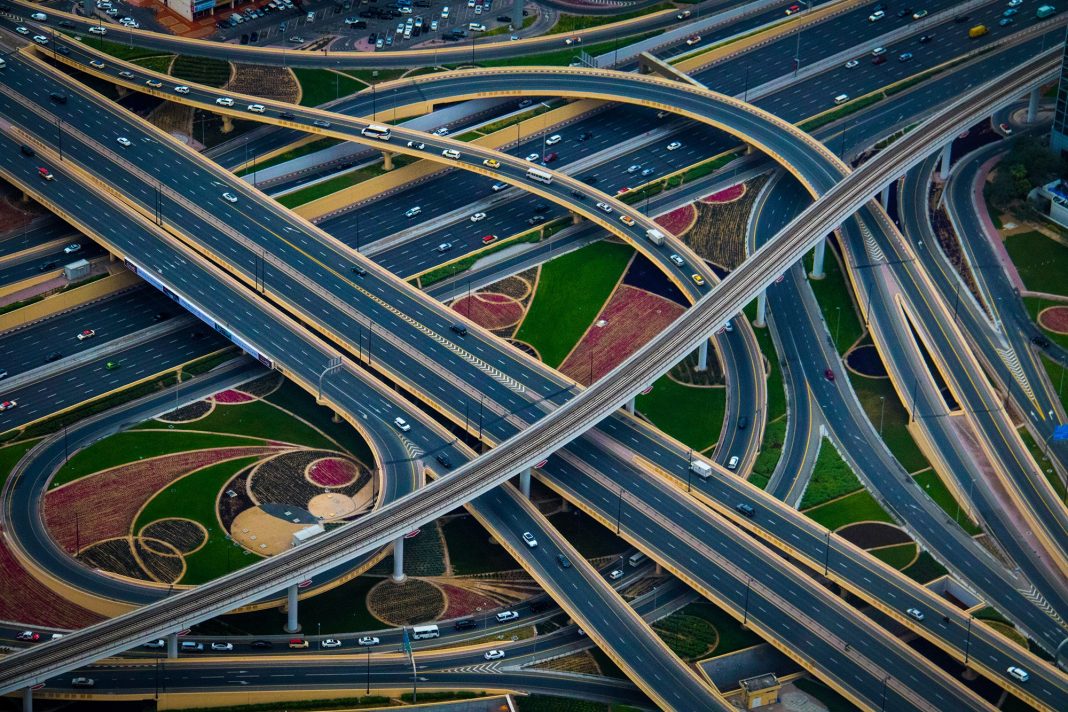“In the 1950s we thought the car would save our cities, now we have to reverse it.” We spoke to Senior Urbanist and expert city planner Paul Lecroart to find out more about what ‘recycling a highway’ really means, and why it’s important in the movement towards more car-free, liveable and carbon-neutral cities.
Highways take up a colossal amount of space in most cities – and make up a large part of the infrastructural urban and suburban landscape. But today’s question is about whether or not we have moved past the need for highway systems, especially in rapidly growing cities that are trying to make the best and most efficient use of every inch of space possible.
Keep reading to find out how a highway can be ‘recycled’ for more sustainable purposes, and why according to a leading expert in the field, it could be the solution we need to make our cities the liveable places they should be.
Background: What Is the History and Current Problem With Highways?
So, what actually is the problem with highway systems? Well, to answer this question we have to go back in time and ask, “why were they built in the first place?”
In the 1950s, starting in the US, people were buying cars and then moving outside of the city to live – meaning they needed a way to travel in and out of the inner city each day for work.
That’s when urban highways were built as a means to facilitate commuters, and this model was then copied all over the world with the all too ironic slogan: “bring the cars in to revitalise city centres!“
Housing units were destroyed to build this infrastructure because it was believed it was creating more value when in retrospect, it diminished it. Highways also often cut through poor neighbourhoods for the benefit of mostly middle-class commuters, reinforcing social segregation.
And even today, highways remain problematic for a multitude of reasons. Networks with separated interchanges create physical barriers within cities, they limit pedestrian and bicycle movement, prevent access to waterfronts and nature, contribute to the social deprivation of roadside housing neighbourhoods and inhibit regeneration within them – not to mention the polluting and environmental impact they generate.
So, what can be done to reconstruct or ‘recycle’ these highways for better purposes? Where around the world has this already been done and what examples can be followed?
Case Studies and Examples:
To better understand what highway recycling actually means let’s look at some worldwide case studies where cities have transformed their expressways into thriving boulevards:
West Side Highway Transformation

Prior to 1973, the West Side highway running along the Hudson in New York City accommodated up to 140,000 cars per day. After its collapse due to neglect and lack of maintenance, the city finally made the decision not to rebuild it and transform the road into a multifunctional boulevard instead.
While there is still traffic along the boulevard (around 80,000 per day), it also now serves other more active forms of transport – over 5,000 bikes and pedestrians per day, as well as a series of boardwalks beside the river. It has now been regenerated from a deprived grey landscape into an expanding and lively area that even car drivers are happy with.
Seoul Cheeonggyecheon Expressway
The deconstruction of the expressway in Korea’s capital city took around 2 years to complete – which aimed to reveal the river that flowed underneath and revive the space into a biophilic pedestrian area. Previously there were around 170,000 cars travelling daily along the highway, whereas now there are only around 30,000 along the restored riverbanks. They even close part of the road on Sundays because there is so little traffic that it can be used for better purposes.
Along with the infrastructure, the city also put together a lot of different transport policies. They worked a lot to enforce reduced parking capacities and improving the public transport system as well – read more about this highway transformation in our other recent article Emissions to Edens.
How Do You Decide How to Repurpose a Highway?
So, highway repurposing is possible. But it still leaves many questions about the practicalities of this infrastructural change: how do you decide which highways to repurpose, or what to do with them?
“Different Starting Points, Same Positive Results”
In an interview with expert Paul Lecroart, we asked how a city would decide which highways to close, and more importantly, how to decide what its best alternative is. “You don’t always start by saying ‘this highway can be recycled or removed’ – there are always different starting points”, Paul says.
“In San Francisco for example, the highway was destroyed due to an earthquake – which led people to question whether it was really necessary to rebuild it, and the answer was evidently no. However, in Paris, the pedestrianisation of the expressway along the riverbanks of the Seine has been a gradual and incremental process over several years.”
Often the process begins by firstly recognising the problem with the highway in your city, realising that it could be used for a better purpose, and then finding out what that purpose is based on your city’s particular wants and needs.
“The idea is to gradually stitch the city back together – the entry points to change are all different, but the end results are equally positive.”
Public Participation Is Integral to the Process
How do you know what the best way to repurpose the highway will be? Paul says that the involvement of the public is key.
“The thing is to open up new ideas; because if you go and ask some in-house engineers or urban planners, they might not think so boldly about the change – they tend to be quite careful when they put things through to the decision-makers.”
This was the case in Vancouver for example, where they had a call for projects on how to repurpose the Vancouver Viaducts. When they involved the public in the process, they started to come up with innovative and imaginative ideas – which was essential because it helped local people to understand that things have not always worked a certain way, and things can change radically.
Advice for a Starter City
So how does a city that wants to repurpose one of its highways get started in the process?
“You need to start with the easier highways”, Paul said, “the ones where you can find an alternative use easily and quickly – for example, in Paris we trialled the closure of one of the main expressways, and bikes and pedestrians started pouring in. New uses came quickly – so it was obvious to us that this highway was not necessary for cars.”
In other words, people like to see change happen fast so they can really envisage and see the change in a tangible way. If it is obvious that a high volume of pedestrians or cyclists would benefit from and enjoy the use of a particular highway – then this is the place to start.
Read our article on How to get started to find out more specifically how to initiate infrastructural car-free changes as a starter city.
What Is Being Done Right Now?
In March 2020 the European Metropolitan Regions and Areas otherwise known as METREX launched From Roads to Streets – an expert group to serve as a platform for the exchange of knowledge and experience on the transformation of urban highways into city streets.
The group aims specifically to investigate the question of why and how converting traffic-orientated highways into streets could be the solution for environmentally-friendly mobility and socially balanced neighbourhoods – helping to restore the city at its core.
They are working with other likeminded organisations in cities across Europe to share knowledge, experience, and expertise on these complex issues to strengthen strategic and creative planning capacities of cities and regions.
The idea is that a learning process will take place based mostly on case studies of ongoing projects of highway transformations – which is necessary to get an understanding of local issues, strategies, planning approaches, and conflicts. By comparing scales, ambitions, and framework policies, professionals from all networks can help to find innovative and bold answers to the questions raised.
To Sum Up
In a nutshell, in some cities around the world the successful repurposing of highways into a much more liveable pedestrian urban green space has already come to fruition.
Now, they must be used as examples for other cities that wish to follow in their footsteps – and now through the work of the From Roads to Streets group, we can hope that European awareness of the need to shift funding streams towards expressway transformation for the liveability, regeneration and climate-neutrality of cities will come to the forefront soon.



I love these Ideas, but as a daughter of parents that can’t walk, but drive. What will these people do in a city without cars. My parents are not yet in a wheelchair, they walk from the house to the car, from the car to the store, where they take a motor shopping cart and then back with the car. They cannot visit cities with only walkways. They need a car to go to the pub, the restaurant, the shop, the railway. What would be a good solution?
Thanks for your question, Sabine. You are right, creating liveable cities is about more than simply removing the means for motorised movement. This should be combined with making urban spaces inclusive and accessible. For those whose needs cannot be met by integrated public transport, reducing the number of unnecessary cars creates room for those who rely on them – requiring fewer roads overall. Dense cities, multi-use buildings and 15-minute city concepts are options, as are electronic vehicles for reducing the impact of essential personalise travel. Your question highlights the challenge cities face and why equity is essential for planning. You may also be interested in the following article: https://citychangers.org/citychanger-katja-diehl/